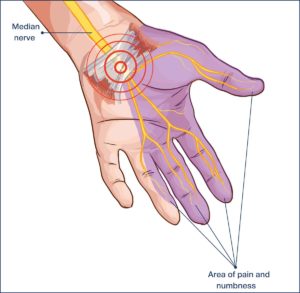
Dorsal Rim Impaction Syndrome (DRIS)
Typical Symptoms
Dorsal Rim Impaction Syndrome is pain over the top (dorsum) of the wrist that typically comes on when you extend your wrist and apply pressure. It can be sharp in nature, quite localised and replicable by the individual.

What causes it?
The pain can be due to a bony or joint capsule abnormality in the wrist that causes pain when it is compressed between the joint and forearm bones. There can be inflammation and swelling associated with it.
If the movement pain is with active movement, it could be from the joint or tendons, whereas if is is mainly with passive movement, it may be more likely originating from the joint.
How can I help myself?
It is useful to identify when you are getting the pain i.e. is it constant or with particular activities? Has there been anything that could have triggered it off and are there things that you can change in terms of your activities e.g. technique, wrist guards etc.
When to seek help?
If symptoms are not improving despite measures you have taken or if symptoms are starting to affect you during other activities or at rest.
What are the treatment options?
Once your physician has assessed you with a thorough history and clinical examination, they may organise an X-ray of your wrist to look for bony changes or an ultrasound to identify joint swelling.
Treatments may include rehabilitation with strengthening around the wrist to reduce loading on the joint, ultrasound guided cortisone injections into the wrist for diagnostic/therapeutic purposes or surgical removal of tissue that maybe catching and causing pain symptoms.
Usually an MRI scan will be undertaken before an operative intervention to further define the anatomy and identify if there are any concurrent injuries.








